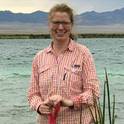
Article
Stand Age is Associated with Clonal Diversity, but Not Vigor, Community Structure, or Insect Herbivory in Chesapeake Bay Phragmites australis
Wetlands
(2015)
Abstract
Invasions are dynamic as both the invading organism and the invaded ecosystem change. Intrinsic changes to the invader (invasion process) can involve population level genetic and reproductive changes. Extrinsic changes (invasion effect) occur to the environment that is invaded (e.g., alterations to the physical environment), to the invaded plant community (e.g.,changes in species diversity and composition or evolutionary changes), or to insect herbivory. To investigate how invasions change through time, we investigated both the process and effect of a Phragmites australis invasion by comparing young and old P. australis stands within two Chesapeake Bay subestuaries. We quantified clonal richness of P. australis stands, vigor of the invader, herbivore damage, and plant community composition. Our results indicate that only the population-scale genetics (clonal richness, genetic distance) changed over the course of 40 years. Clonal richness was lower in the old P. australis stands, likely due to intraspecific competition and/or initial colonization by fewer genotypes. The mean genetic distance among clones within old stands was lower than within young stands, suggesting that clones within old stands were mostly closely-related, while young stands were likely established by seeds from nearby stands and so were more representative of the local area. Clones in different old stands were genetically more distant from each other than those in young stands were from clones in other young stands. This pattern suggested that old stands were established by independent colonization events, while young patches were established by a mixture of seeds from local stands, which generated the lower average genetic distance between clones across young stands. We found that community composition, plant vigor, and herbivore damage to stems were similar across different age stands, which indicated that the effect of P. australis invasion becomes stable within a few decades. Over longer periods, the intrinsic invasion process may be more dynamic than the invasion effect.
Disciplines
Publication Date
2015
DOI
https://doi.org/10.1007/s13157-015-0678-7
Citation Information
Hazelton, ELG et al. 2015. Stand Age is Associated with Clonal Diversity, but Not Vigor, Community Structure, or Insect Herbivory in Chesapeake Bay Phragmites australis. Wetlands 35(5):877-888. ://doi.org/10.1007/s13157-015-0678-7
